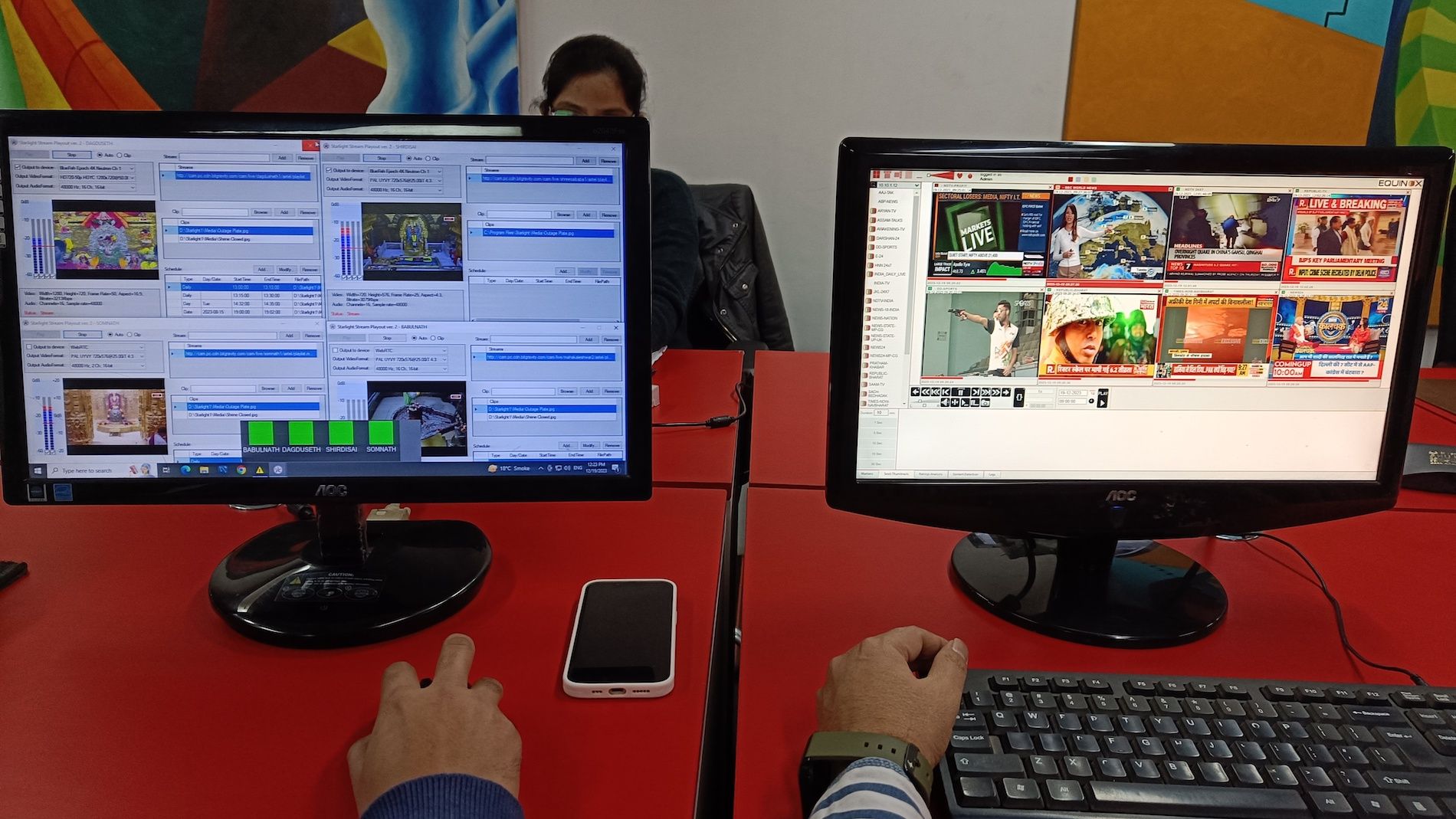Video SDK: playout and graphics for Astech Systems, India

Based in India, Astech Systems supplies TV and radio channels, content aggregators, cable TV companies and satellite broadcasters with solutions for playout, media monitoring and graphics. We’ve spoken to Avnish Daas, the founder, owner and CEO of the company about his company’s story and benefits of using MPlatform, a Medialooks Video SDK.
What is the background of your company?
In 1996, we started our company, Astech Systems with a focus on IT security and developing our own antivirus software. We then created a subsidiary called Broadcast Automation Systems to handle projects in the broadcast industry – it was started in 2003. This division grew rapidly and eventually became larger than the parent company. We later decided to merge the subsidiary back into Astech Systems, and now we operate under this name.
What drove the growth of the broadcast industry at that time?
In the early 2000s, the Indian government made significant policy changes that allowed private news channels to operate in the country. This led to a boom in the industry, and now there are over 1000 news channels in India.
What are your key products?
We offer a range of products for broadcasters. We have 4 areas of operation. One is Equinox, which is a video monitoring product with a 90% market share in India. We also have Infinity, which we are now porting to MPlatform – a product for real-time graphics. Another solution is Starlight, a stream playout system (most of it has been ported to MPlatform). Finally, we provide services such as setting up a complete business news channel from scratch (our software pulls data from the stock exchange and updates graphics and tickers) or creating custom solutions for elections in India (we have elections almost every year in India, we have a platform that we provide for delivering live election results).
What do your customers value?
Our reliability and support. Any product takes time to stabilize, to come to a level where we can be 100% sure about its stability as well as operability. Whenever a new product comes, there are certain bugs in it, there are certain shortcomings, maybe certain features are not implemented fully. Even at that time our customers give us preference over the competition because they know that in case of any issue, in case of any further requirements that they have, we'll be the first people to come and support them and implement it for them. This, I feel, is the most important part of why our company is being respected so much.

How did you get started using Medialooks products?
We've used MPlatform for quite a lot of years. And initially, we started off with a very small module. I think that was for a playout system – we built a customized system for one of our customers. What MPlatform offered was independence of media in the sense that the different formats, different types of extensions and decoders could be used in a single playlist.
Then we came back with the next version of that production, Starlight. Which was actually to play out streams for a very specific purpose. You see, India is a very religious country. Most of the people believe in some religion or another. 80% of the people here are Hindus. Now, the thing is that Hindus feel that they should go and visit temples: there are big temples and there are very renowned temples all over India. But it's not possible for many people to travel this entire length and breadth of the country. What the content aggregators have done is they take the footage out of the CCTVs pointed towards the temple and stream it on the TV of the end user. You can switch on your TV, you can choose the feed from any temple, and you can offer your prayers to that temple from home.
What components of our SDK do you use?
If we look at Starlight, I think you can say we are using pretty much most of the functions of the SDK. In Infinity, our graphics product, we primarily use the Character Generator. We are using WebRTC to stream the output over the Internet to a remote PC.
What do you think about the Video SDK?
I think that the SDK has evolved, and it is incredibly stable. That’s what I like about it. For example, if there were a memory leak... earlier we used to come back to you. Now, first we do our own internal checks, because it's very unlikely that something will be there in the SDK. We're very happy with the stability of the product.
Second, it is the flexibility that it provides. It’s just very easy to use. That's all I can say. For a programmer, to have an interface that no matter what codec I'm using, I don't have to worry about anything, it just works automatically. You pick up any file, and then start playing back and then scale it without any worries. I can output it, I can stream it with just a few interfaces here and there. So it is the ease of handling the video, it helps us concentrate more on the workflow part than the actual handling of the media part.
What have you achieved with the SDK?
It has made our life easier. I don't need people with such high expertise, such high technical levels to do the development with the SDK because the SDK does take over a lot of that work. And our confidence in the SDK is now pretty well-established. That's why we continue to use it.
Any new programmer who joins us gets an initial crash course in the SDK and then is asked to go through the samples and do some things with it. Even if someone is coming to work on a different product, still we give them a hands-on to the SDK, just in case we need it. MPlatform is one of the major SDKs that we use, so we always make sure that everybody knows it.
How would you describe our product if you were explaining it to somebody?
It depends on who I'm explaining it to. If I'm explaining it to another programmer, I would say: use it, it's going to make your life very easy. If I'm going to explain it to a software product manager, I would say: use it so that your maintenance costs come down. I think, across the board it's going to help everyone. Again, if I talk to a director-level person, I will tell him that it will bring your cost down eventually, as time of development comes down.
